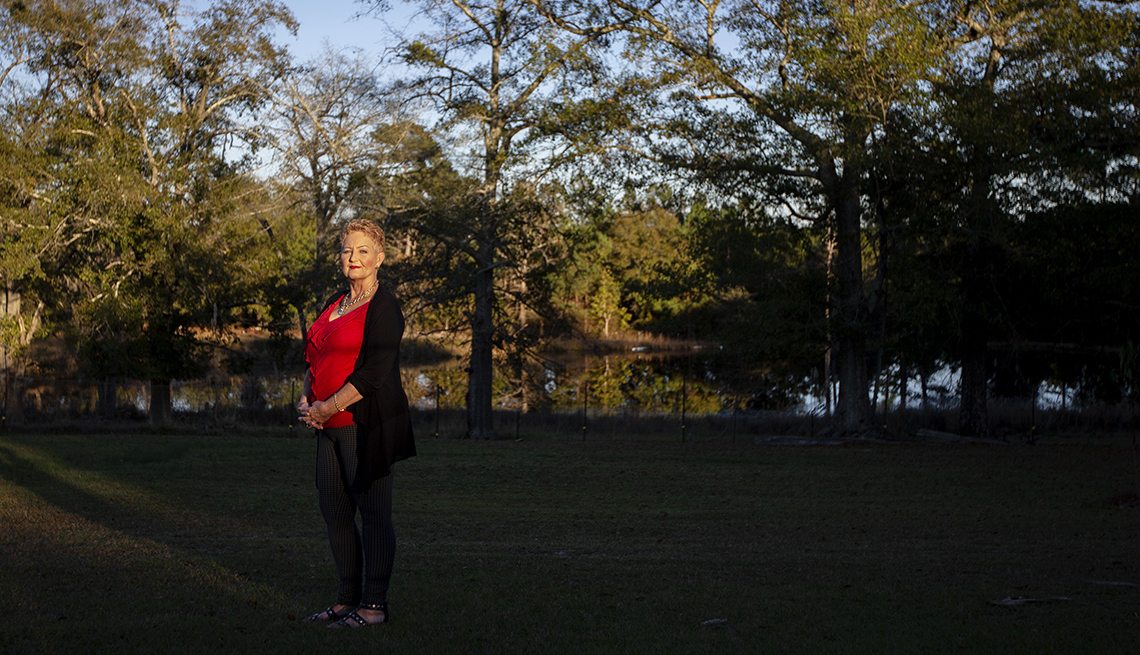AARP Hearing Center

Jan Vick Harris tried to reassure her mother. “I love you, Mama,” she said.
Her 89-year-old mother’s face brightened, then she appeared confused. “You love me?” she asked. She seemed puzzled by talking through the window that came between her and her daughter since in-person visits to her Hartsville nursing home have been restricted during the COVID-19 pandemic.
“It has been very hard,” said Vick Harris, 67, a retired hairdresser from Chesterfield. Her mother, Evelyn McLain, has Alzheimer’s disease.
“Think about losing six months out of your mama’s life when she’s almost 90. You know you can’t get that time back.”
AARP South Carolina plans to focus on several pressing nursing home issues when the Legislature restarts on Tuesday, Jan. 12.
Priorities include expanded visitation (in person and virtual), better reporting on conditions in homes and the need for Medicaid expansion to improve access to care for low-income residents.
About 37 percent of COVID-19 deaths in the state have been linked to nursing homes.
In April, the Department of Health and Environmental Control drew criticism for failing to disclose infections and deaths in specific facilities.
At the time, Teresa Arnold, state director for AARP South Carolina, pushed for improved reporting in the state’s 196 nursing homes. “It’s shocking to think we would not make that information available,” she said.
Improved transparency
Arnold gave credit to Gov. Henry McMaster (R) and health officials for their prompt response. Within a week, names of facilities with COVID-19 cases among staff and residents were released.
Information is being updated at scdhec.gov. Facilities were instructed to provide virtual visits.
In a recent survey of AARP members in the state, 81 percent said they were satisfied with the efforts by long-term care facilities to keep them in touch with loved ones. But almost 40 percent of those unable to connect with a resident were concerned about the safety of their relative.
Said one respondent: “My 100-year-old mother tested positive for COVID-19, so it didn’t protect her. She’s over the virus but dying from depression.”
McMaster acknowledged that the mental and emotional health of nursing home residents and their families is important and modified the rules to allow limited outdoor in-person visits following guidelines of the Centers for Disease Control and Prevention and the state.
In AARP’s 2020 national scorecard on long-term care services, the state ranked 48th overall and 50th on affordability and access.
An AARP analysis of data from the Centers for Medicare & Medicaid Services, covering three four-week time intervals from mid-summer into fall, found the rate of resident COVID-19 deaths in the state’s nursing homes fell by more than 50 percent from 1.2 per 100 to about the national average at 0.58 per 100.
The analysis found that other key measures including resident rates, staff rates, and PPE and staff shortages also dropped significantly.
“We are so encouraged that the South Carolina nursing home death rates have been cut in half,” Arnold said. “I am grateful to the governor for tackling this issue with such focus. I congratulate nursing homes, too, but we still want to see these shortages in staff and PPE eliminated.”
Arnold, who is serving on the state’s Long-Term Care Task Force, also sees a need for more oversight of the CARES Act funding provided to nursing homes as well as more state funding for Adult Protective Services.
For more information on COVID-19 in nursing homes in South Carolina, go to aarp.org/scnursinghomes.
AARP is working with the state Department on Aging to update GetCareSC.com with AARP’s Family Caregiving Series videos.
Linda H. Lamb is a writer living in Columbia.
More on Long-term Care































































